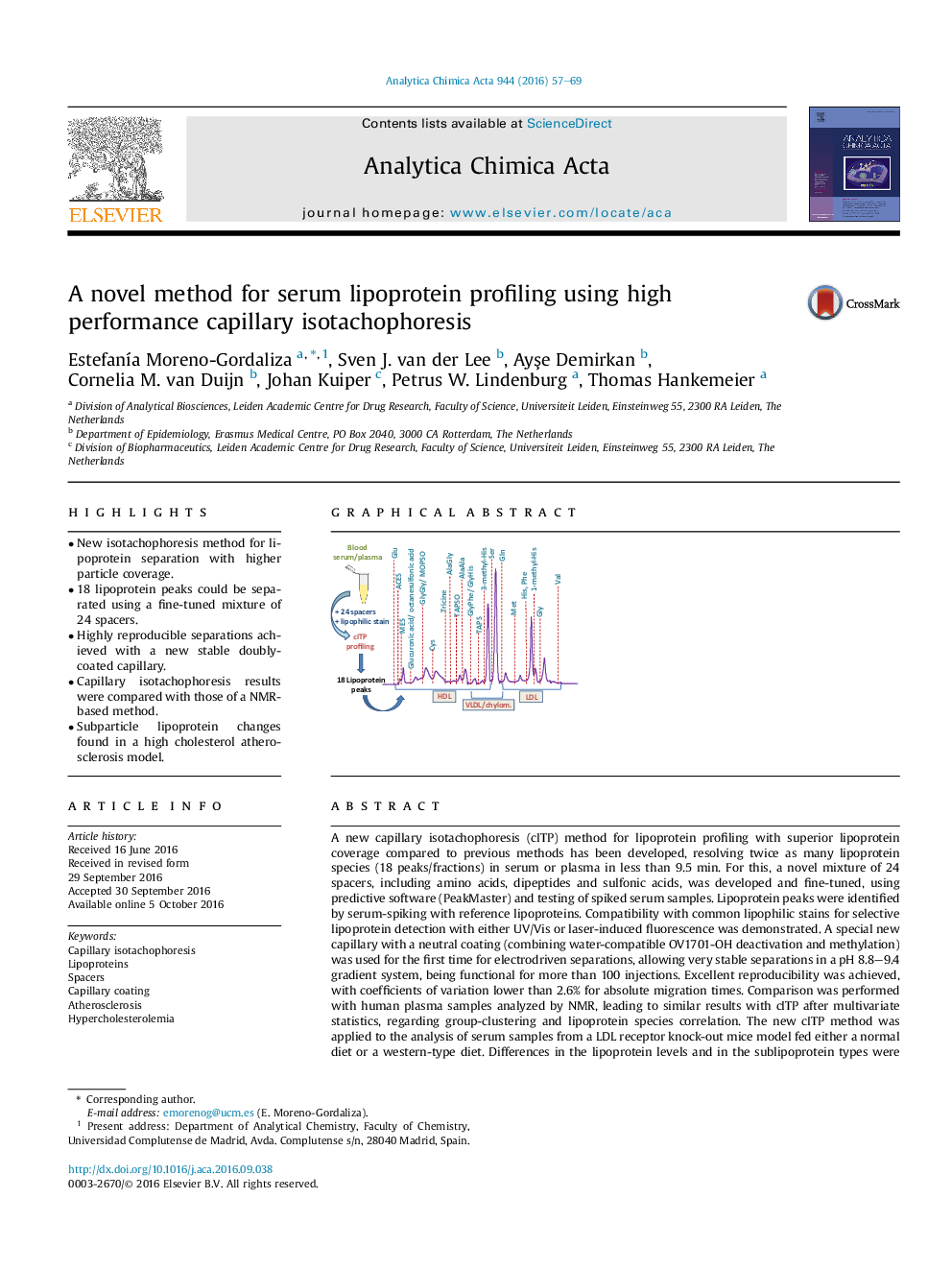| کد مقاله | کد نشریه | سال انتشار | مقاله انگلیسی | نسخه تمام متن |
|---|---|---|---|---|
| 5131417 | 1490888 | 2016 | 13 صفحه PDF | دانلود رایگان |
- New isotachophoresis method for lipoprotein separation with higher particle coverage.
- 18 lipoprotein peaks could be separated using a fine-tuned mixture of 24 spacers.
- Highly reproducible separations achieved with a new stable doubly-coated capillary.
- Capillary isotachophoresis results were compared with those of a NMR-based method.
- Subparticle lipoprotein changes found in a high cholesterol atherosclerosis model.
A new capillary isotachophoresis (cITP) method for lipoprotein profiling with superior lipoprotein coverage compared to previous methods has been developed, resolving twice as many lipoprotein species (18 peaks/fractions) in serum or plasma in less than 9.5Â min. For this, a novel mixture of 24 spacers, including amino acids, dipeptides and sulfonic acids, was developed and fine-tuned, using predictive software (PeakMaster) and testing of spiked serum samples. Lipoprotein peaks were identified by serum-spiking with reference lipoproteins. Compatibility with common lipophilic stains for selective lipoprotein detection with either UV/Vis or laser-induced fluorescence was demonstrated. A special new capillary with a neutral coating (combining water-compatible OV1701-OH deactivation and methylation) was used for the first time for electrodriven separations, allowing very stable separations in a pH 8.8-9.4 gradient system, being functional for more than 100 injections. Excellent reproducibility was achieved, with coefficients of variation lower than 2.6% for absolute migration times. Comparison was performed with human plasma samples analyzed by NMR, leading to similar results with cITP after multivariate statistics, regarding group-clustering and lipoprotein species correlation. The new cITP method was applied to the analysis of serum samples from a LDL receptor knock-out mice model fed either a normal diet or a western-type diet. Differences in the lipoprotein levels and in the sublipoprotein types were detected, showing a shift to more atherogenic particles due to the high cholesterol diet. In summary, this novel method will allow more detailed and informative profiling of lipoprotein particle subtypes for cardiovascular disease research.
283
Journal: Analytica Chimica Acta - Volume 944, 9 November 2016, Pages 57-69
